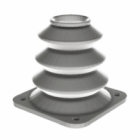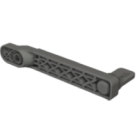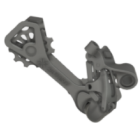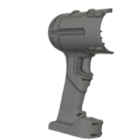What is the 3D printing process?
The 3D printing process, also known as additive manufacturing, is a method of creating three-dimensional objects by adding material layer by layer, based on a digital model. Unlike subtractive manufacturing, which removes material to shape a part, 3D printing builds it from the ground up, depositing only what’s needed. This approach allows for more design freedom, less waste, and the ability to fabricate complex geometries that would be difficult or impossible with traditional methods.
Core idea behind the process
At its core, 3D printing is a toolchain-driven workflow: digital design, slicing, machine execution, and post-processing. What makes this process unique is that it transforms data — not raw material — into the driver of manufacturing. It’s not just about how a part is made, but how ideas move from screen to structure without needing molds, tools, or extensive setup.
The 3D printing process in additive manufacturing gives designers and engineers a direct, iterative way to move from concept to physical part, accelerating development cycles and enabling small-batch or customized production.
Types of 3D printing processes
There’s no single method of 3D printing. Instead, the industry includes several types of 3D printing processes, each based on a different way of forming layers:
- Fused Deposition Modeling (FDM) – thermoplastic filament is melted and extruded,
- Stereolithography (SLA) – resin is cured by laser or light projection,
- Selective Laser Sintering (SLS) – powdered materials are fused with a laser,
- Direct Metal Laser Sintering (DMLS) / SLM – similar to SLS but for metals,
- Material Jetting / PolyJet – droplets of resin are jetted and cured,
- Binder Jetting – a liquid binder fuses powder particles without heat,
- Laminated Object Manufacturing (LOM) – sheets of material are cut and layered.
Each method uses the same basic logic — layer-by-layer construction — but differs in speed, material, accuracy, and application.
Why does this process matter?
Understanding the 3D printing process means recognizing its potential to streamline production, enable on-demand manufacturing, and open up new frontiers in engineering and design. Whether used for prototyping, tooling, or functional parts, the process is becoming a core component of how modern industries work — and a key differentiator for innovation-driven businesses.
Explore also
- 3D printing process step by step
- How to make a 3D model for printing?
- What is 3D slicing in printing? Key to print quality and success
- Understanding 3D print settings for better results
- The additive manufacturing process: how 3D printing builds layer by layer
- Printing 3D
- What is post-processing?
- Why do 3D prints fail?
Related categories













